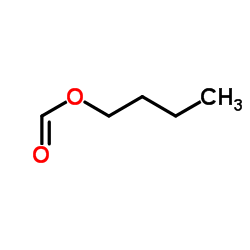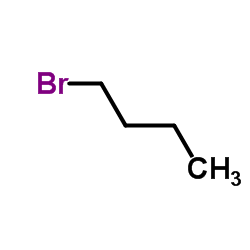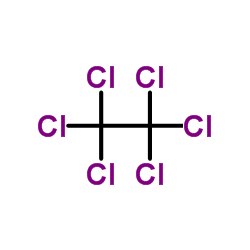Dibutyl sebacate

Dibutyl sebacate structure
|
Common Name | Dibutyl sebacate | ||
|---|---|---|---|---|
| CAS Number | 109-43-3 | Molecular Weight | 314.460 | |
| Density | 0.9±0.1 g/cm3 | Boiling Point | 351.3±10.0 °C at 760 mmHg | |
| Molecular Formula | C18H34O4 | Melting Point | 205 °C (dec.)(lit.) | |
| MSDS | Chinese USA | Flash Point | 157.5±17.4 °C | |
| Symbol |

GHS07 |
Signal Word | Warning | |
Use of Dibutyl sebacateDibutyl sebacate (Dibutyl decanedioate) is a dibutyl ester of sebacic acid, mainly used as a plasticizer in production of plastics[1]. |
| Name | Dibutyl sebacate |
|---|---|
| Synonym | More Synonyms |
| Description | Dibutyl sebacate (Dibutyl decanedioate) is a dibutyl ester of sebacic acid, mainly used as a plasticizer in production of plastics[1]. |
|---|---|
| Related Catalog | |
| References |
| Density | 0.9±0.1 g/cm3 |
|---|---|
| Boiling Point | 351.3±10.0 °C at 760 mmHg |
| Melting Point | 205 °C (dec.)(lit.) |
| Molecular Formula | C18H34O4 |
| Molecular Weight | 314.460 |
| Flash Point | 157.5±17.4 °C |
| Exact Mass | 314.245697 |
| PSA | 52.60000 |
| LogP | 5.97 |
| Vapour Pressure | 0.0±0.8 mmHg at 25°C |
| Index of Refraction | 1.448 |
| Water Solubility | hexane, toluene, ethanol and acetone: soluble |
CHEMICAL IDENTIFICATION
HEALTH HAZARD DATAACUTE TOXICITY DATA
|
| Symbol |

GHS07 |
|---|---|
| Signal Word | Warning |
| Hazard Statements | H315-H319-H335 |
| Precautionary Statements | P261-P305 + P351 + P338 |
| Personal Protective Equipment | Eyeshields;full-face respirator (US);Gloves;multi-purpose combination respirator cartridge (US);type ABEK (EN14387) respirator filter |
| Hazard Codes | Xn,Xi |
| Risk Phrases | R40:Limited evidence of a carcinogenic effect. R36/37/38:Irritating to eyes, respiratory system and skin . |
| Safety Phrases | S36/37-S36-S26 |
| RIDADR | NONH for all modes of transport |
| WGK Germany | 3 |
| RTECS | VS1150000 |
| HS Code | 2917131000 |
|
~3% 
Dibutyl sebacate CAS#:109-43-3 |
| Literature: Tetrahedron Letters, , vol. 37, # 37 p. 6733 - 6736 |
|
~% 
Dibutyl sebacate CAS#:109-43-3 |
| Literature: Scientific Papers of the Institute of Physical and Chemical Research (Japan), , vol. 16, p. 15 Chem. Zentralbl., , vol. 102, # II p. 1694 |
|
~% 
Dibutyl sebacate CAS#:109-43-3 |
| Literature: Tetrahedron, , vol. 45, # 5 p. 1533 - 1536 |
|
~% 
Dibutyl sebacate CAS#:109-43-3 |
| Literature: Helvetica Chimica Acta, , vol. 20, p. 775 |
| HS Code | 2917131000 |
|---|---|
| Summary | 2917131000 esters of adipic acid。Supervision conditions:None。VAT:17.0%。Tax rebate rate:9.0%。MFN tariff:6.5%。General tariff:30.0% |
|
A novel approach for honey pollen profile assessment using an electronic tongue and chemometric tools.
Anal. Chim. Acta 900 , 36-45, (2015) Nowadays the main honey producing countries require accurate labeling of honey before commercialization, including floral classification. Traditionally, this classification is made by melissopalynolog... |
|
|
Formulation considerations in the design of topical, polymeric film-forming systems for sustained drug delivery to the skin.
Eur. J. Pharm. Biopharm. 91 , 9-15, (2015) Polymeric film-forming systems (FFSs) are potential drug delivery systems for topical application to the skin. The FFSs form thin and transparent polymeric films in situ upon solvent evaporation. Thei... |
|
|
In-line NIR monitoring of key characteristics of enteric coated pellets.
Eur. J. Pharm. Biopharm. 88(3) , 847-55, (2015) We describe the development of an in-line monitoring approach for the fluid-bed drying and coating steps for the production of enteric coated pellets by NIR. Our results show that key pellet character... |
| Sebacic Acid Dibutyl Ester |
| MFCD00001657 |
| dibutyl ssebacate |
| dibutyl p-tolylphosphonate |
| sebacic acid di-n-butyl ester |
| dibutyl decanedioate |
| EINECS 207-395-0 |
| Decanedioic Acid Dibutyl Ester |
| Di-n-butyl-sebacate |
| Dibutyl sebacate |
| Decanedioic acid, dibutyl ester |
| di-n-butyl sebacate |
| Dibutyl-p-tolylphosphit |
| p-Tolylphosphonsaeuredibutylester |






 CAS#:67-72-1
CAS#:67-72-1 CAS#:112-47-0
CAS#:112-47-0
